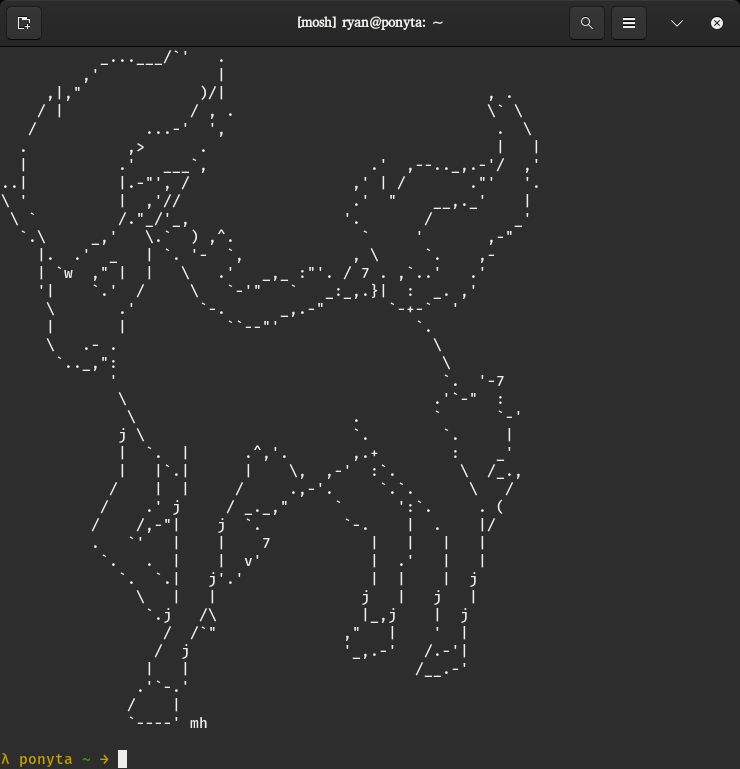Setup Mosh

Since builing my desktop, whenever I work
on another machine, I usually end up ssh’ing back to it to work remotely. It
has my files, more power, and much of my work flow is done from a terminal
window anyway, so why not? The only issue I have with ssh is that if I have
a spotty internet connection, or if I sleep/suspend my laptop while moving
around, the ssh session will occasionally time out. Tmux
and tmuxinator make this less of an issue,
since I can re-attach my session, but I still wish my remote sessions were a
bit more seamless. They can be… using mosh.
Mosh

Mosh is a more robust replacement for interactive ssh terminals. It automatically roams and continues to work even as the computer switches networks or is put to sleep. It also responds to typing, even on a bad connection, which cuts down on lag. Lastly, it’s free and open source software, licenced under the GPLv3.
Mosh Install
Mosh should be in most Linux repos, and is also available on BSD, Mac, Windows,
and basically everything else. For more information on how to install it on
your platform, head over to the getting mosh
page. For me, it was a simple dnf/yum install to get it on both my laptop
and
server:
sudo dnf install mosh
*Note: My centos server required me to first enable the epel repos to get
access to mosh. Fedora might also, but I already had it enabled on my
laptop.
sudo yum install -y epel-release
sudo yum install -y mosh
Open Firewall Ports
After installing mosh… it might not immediately work. If so, it is likely
due to not having the required ports open. Mosh uses UDP ports 60000-61000 for
it’s connections. Enable these ports and optionally restart the firewall,
before trying mosh again.
Note: If you want to connect from outside the network, remember to also forward these ports on the network.
Connect
We should now be able to connect to the server using mosh. Typical connections
look very similar to ssh:
mosh ryan@centos-server
If a specific mosh UDP port needs to be specified (for port-forwarding, for example)
use the -p flag:
mosh -p 1234 ryan@centos-server
SSH Options
Mosh uses ssh for the initial connection. Occasionally, particular ssh options
might be required in order for mosh to initialize a connection. For
example, I typically ssh home on a particular port, so that my router knows
which VM to transfer me to. Options like this can be passed to mosh using
the --ssh flag:
mosh --ssh="ssh -p 1234" ryan@centos-network
Conclusion
That’s really it. There is a bunch of cool technical stuff going on under the hood of mosh, but on the surface… it is simply useful. For an even better experience with mosh, be sure to check out tmux. Enjoy!